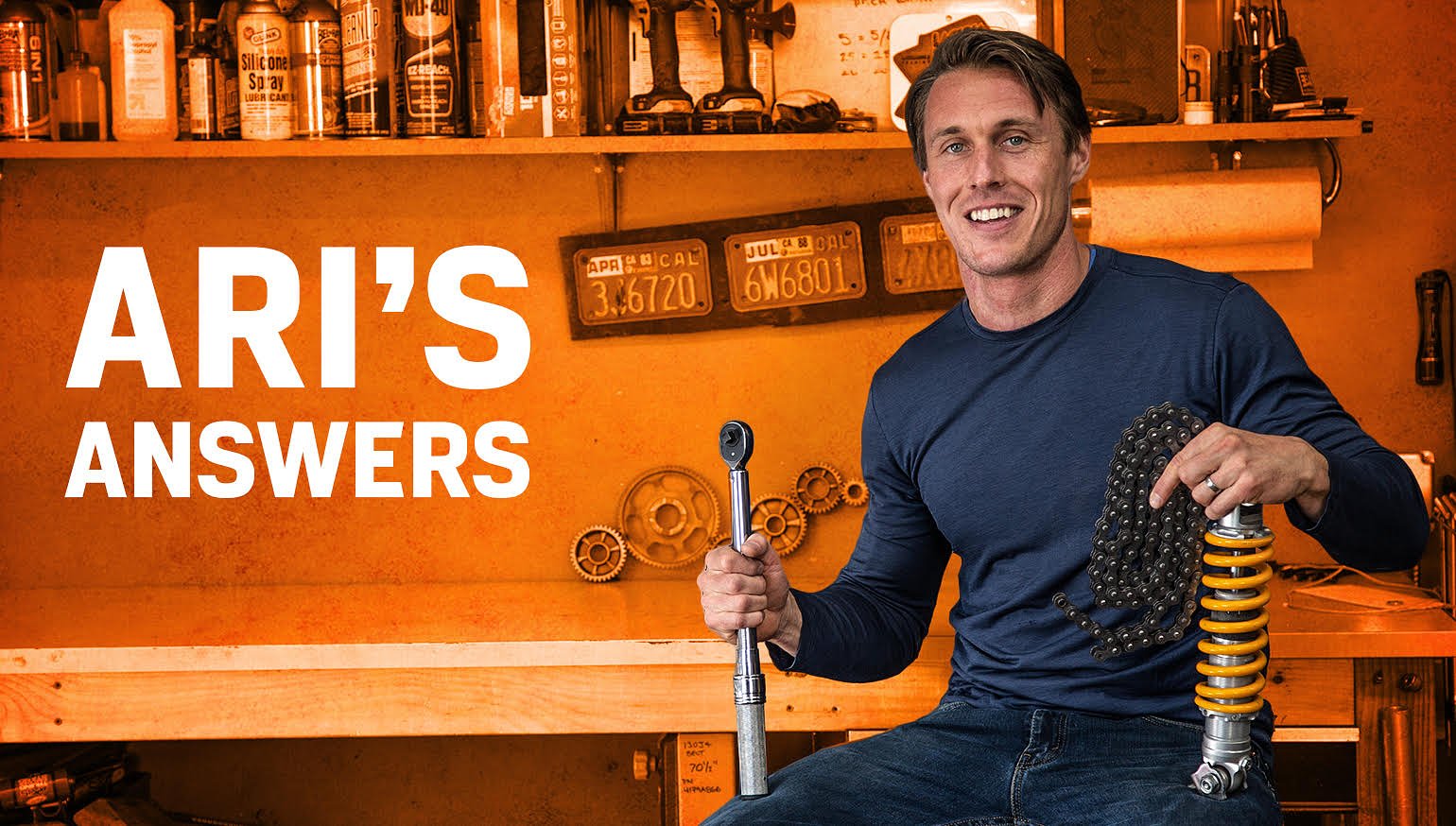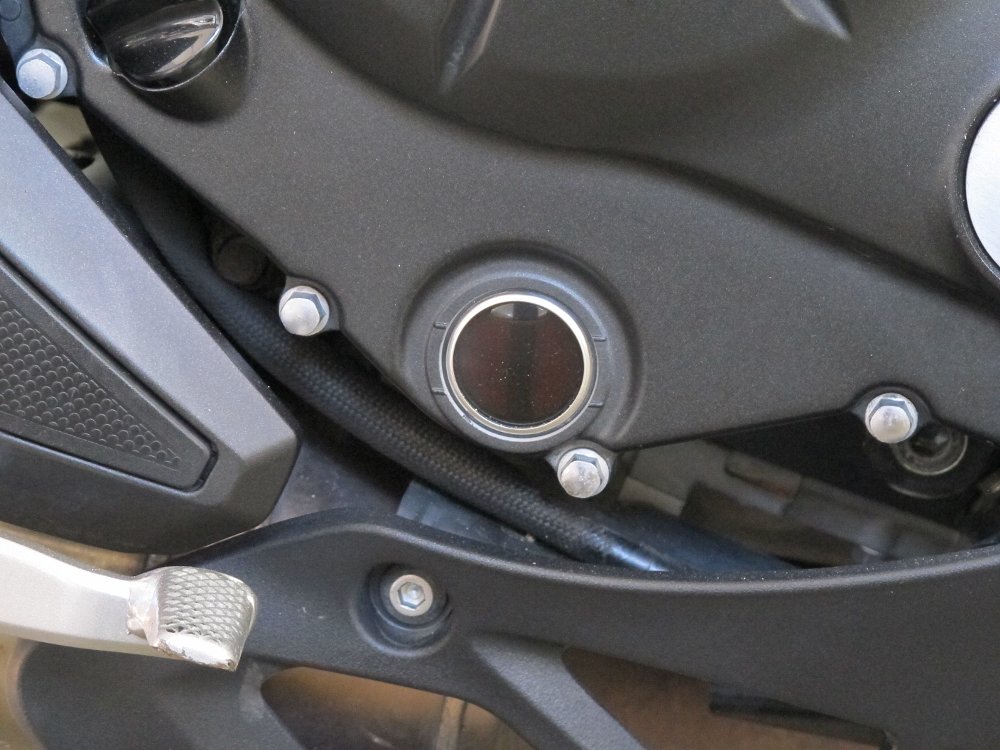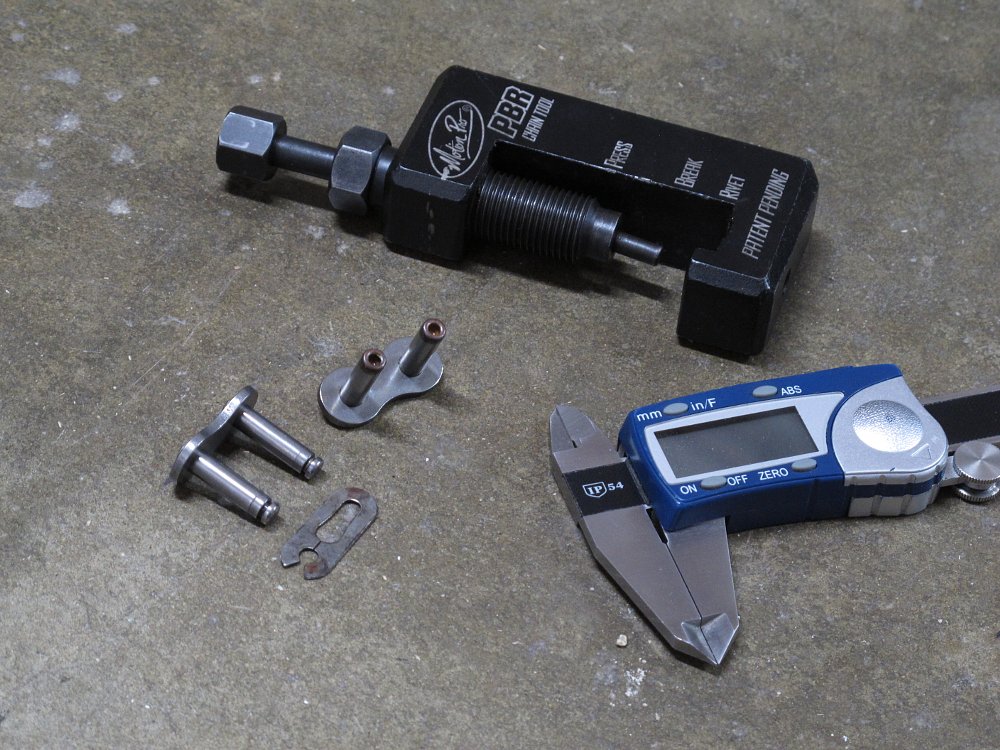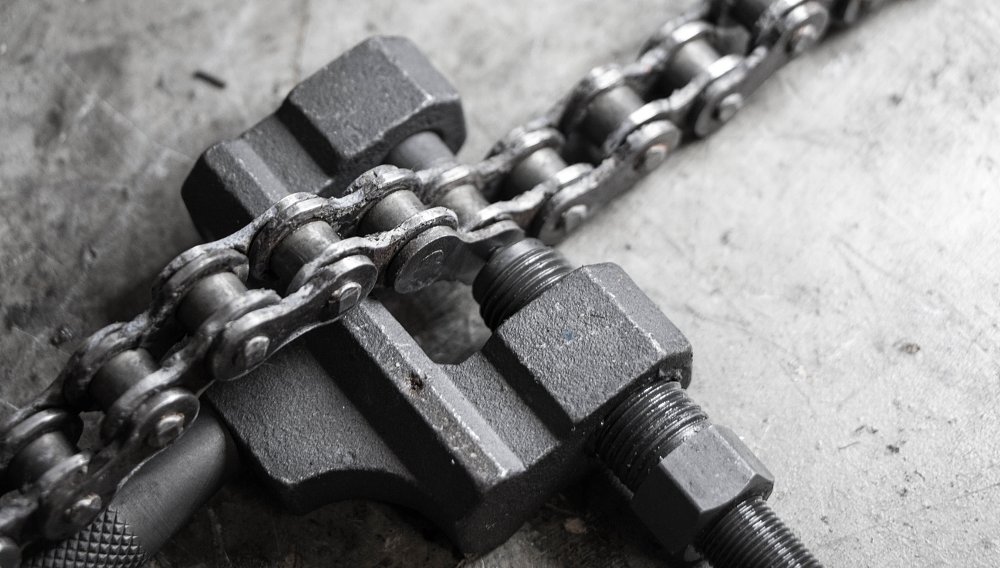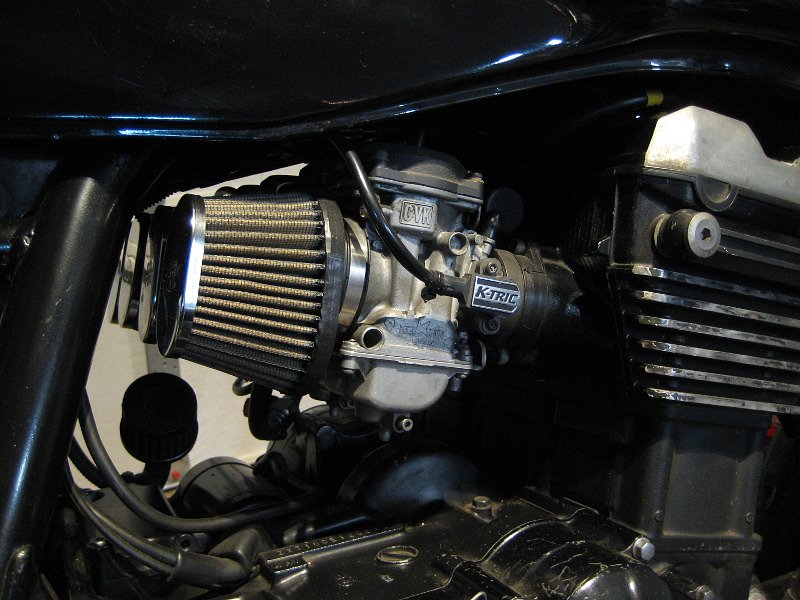There’s no way around it: Motorcycles require a lot more attention than their four-wheeled kin. Lots of riders opt to tend to their own machines, but sometimes they’re left with questions the owner’s manual doesn’t answer. That’s where today’s installment comes in.
I overfilled my engine oil by about 100 to 150 ml. It’s a Royal Enfield Classic 500. Lots of people told me that it’s okay and I don’t need to drain it. What do you think? — @aakash_jayadev
I wouldn’t sweat it, for a couple of reasons. First, given the total oil volume your engine holds (about two liters), 150 milliliters represents a tiny percentage extra. Second, the Classic is a low-revving, under-stressed engine, so the chances of the oil getting beaten into a froth by the crank or excess oil pressure blowing seals or filling your airbox are very, very slim.
However, if you’re curious about the risks of overfilling your oil and ways to remedy it, we cover the topic in a recent episode of The Shop Manual.
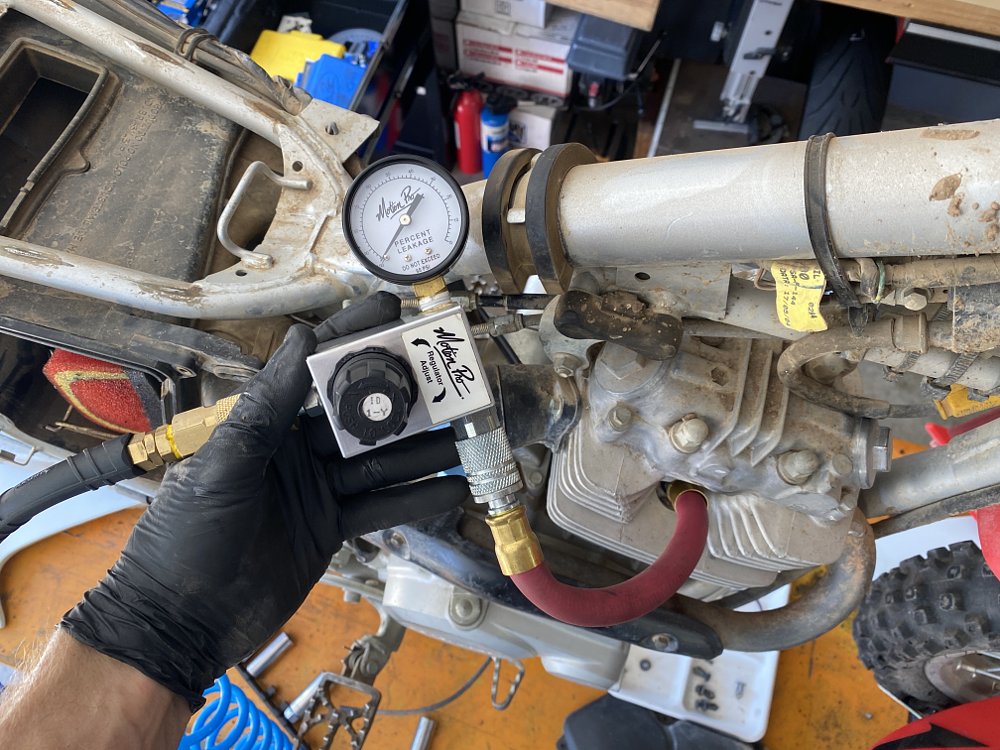
How does one know if the engine is losing compression and when the head or valves need to be worked on? I’ve ridden around 30,000 miles on my bike so I want to understand the general maintenance cycle of these things. — @devambardekar
Low compression will present itself as hard starting, weak idle, and low power output. But there are other issues that can lead to those symptoms as well, so if you’re concerned about the integrity of your top end you’ll want to conduct (or have a mechanic conduct) a leak-down test.
A leak-down test will let you know how well your piston rings and valves are sealing. Anything more than 15 percent leak down and it’s time for piston rings, a valve job, or both.
As far as general maintenance goes, I wouldn’t worry about your top end until the engine starts having issues that suggest something’s amiss. Just stay on top of your oil changes and valve-clearance checks and you should be fine.
Could you run through replacing a chain with both a snap-link master link and a regular link that you need to use a chain tool for? Some tips on how to do this properly would be good as well as understanding how to measure the riveted link correctly since I know it needs to be mushroomed a certain amount. — @drew Mccurdy
First up, you should never just replace the chain. Since the chain and sprockets wear together, it’s important to replace all three components as a set. If you put a new chain on worn sprockets or vice versa, you’ll get accelerated wear on the new parts.
As far as master links are concerned, the clip-type links are convenient since you can install them using basic hand tools (pliers), but they’re not as secure as rivet-type links, since it’s possible for the clip to get dislodged. To help avoid that, you always install the clip with the open end facing opposite the direction of rotation. Some people also safety wire the clip or apply a smear of RTV sealant for added protection. Nowadays clip-type master links are only seen on unsealed chains like those used on dirt bikes.
Rivet links are what you’ll find on most modern sealed chains, and installing them requires a special chain tool to press the link together and then flare the annealed end of the pins.
Apply plenty of the supplied grease to the pins and O-rings when you assemble the link, and then use your tool to press the side plate on until the O-rings are compressed to the same width as adjoining links. When it comes to pressing the pin ends, you typically aim for 0.5-0.7 mm of flare compared to the original diameter, as measured with a caliper. Go slowly when pressing the pins — I usually measure after each half turn of the tool — to ensure you don’t overdo it and crack the pin ends.
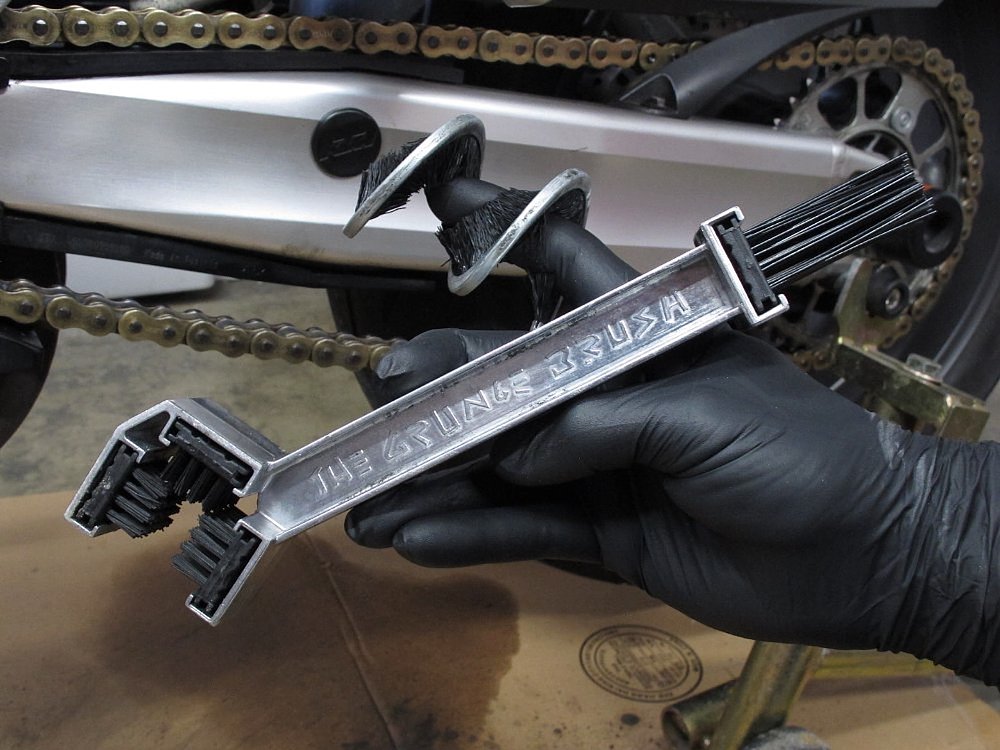
Is there some secret to a clean chain? I’ve been using Motul Chain Clean and it gets most of the grime off, but I’m still left with some grease on the rollers etc. Any tips? — @le_chickenhound
Ya gotta use a brush. It’s the only way to really get those links clean. An old toothbrush will suffice, but a purpose-made chain brush will hit the links from multiple sides. My go-to is the Tirox 360 brush, but the Grunge Brush kicks butt, too. We recently ran an article on chain care, so check that out for a full rundown.
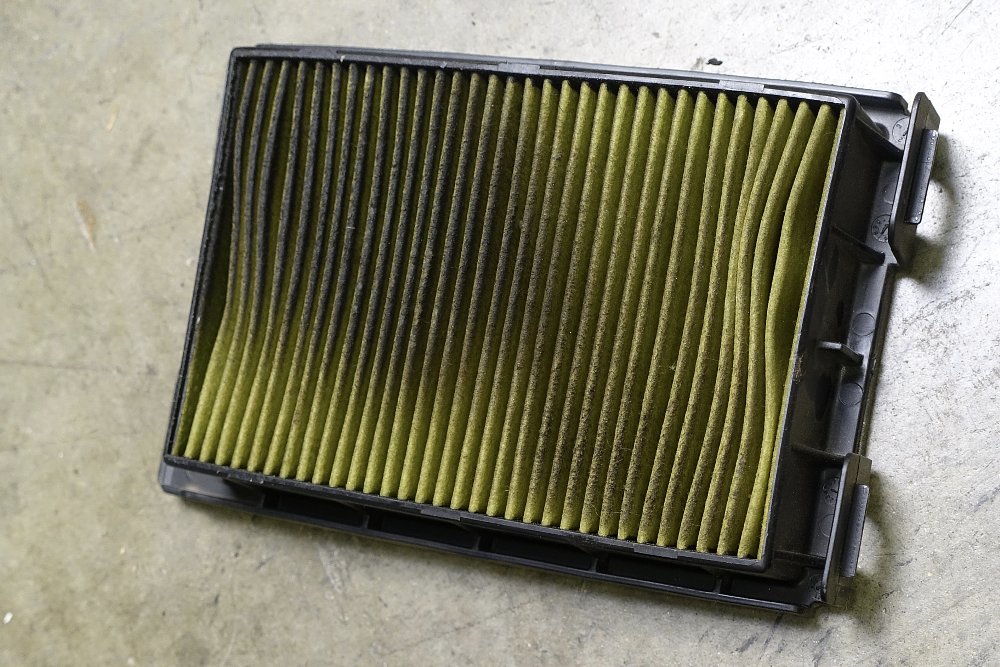
When should I replace the air filter on my 200 cc motorcycle? — @akj_419
What’s your manual say? That’s going to have the best info, since the manufacturer is familiar with the surface area of the air filter, what the bike’s intended use is, and other factors that will affect service intervals.
You list your bike’s displacement, and while that ultimately doesn’t impact the frequency of service, it does suggest that your motorcycle is of a fairly simple construction so the filter is probably easy to access. So why not take a look? If the filter is visibly dirty or coated in grime, it’s due for replacement. You’d be well served to check your filter regularly and develop your own service schedule based on the conditions you ride in.
Do you use engine flush products? Do they harm the engine internals or are they good? — @aditya.sahasrans
I don’t use them, and would only consider it if I was servicing a bike that had really old, sludgy oil in it. As long as you’re doing regular oil changes with a decent quality oil, then you're already "flushing" your engine. Engine oil contains detergents that help scrub grime and keep it suspended in the oil so it gets swept out when the oil is drained. And then of course there’s the oil filter, which is actively working to remove grime.

 Membership
Membership

